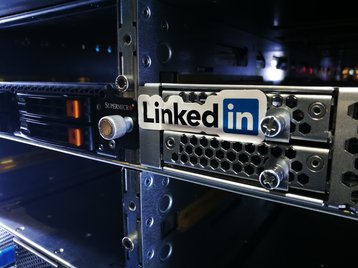As Open19 launched this week, proposing standard 19-in rack infrastructure for networks, servers and storage, the first question many people asked was why? Doesn’t the Open Compute Project (OCP) already do this?
On the face of it, it seems odd that after years of OCP creating and sharing designs for data center products, LinkedIn saw the need to set up a different body. Both OCP and Open19 are creating specifications for no-frills data center hardware, so that customers can get compatible kit from multiple vendors. Both groups have specifications for networks, power distribution, racks and ways to put servers into those racks. OCP has been doing this since 2011, when it was set up to share the designs that Facebook created for its giant webscale data center estate. On the face of it, Open19 seems to be stepping into an occupied space.
Size matters
The Open19 name points up one difference between the two groups. Open19’s specifications are all for 19in racks, the same size that has been standard since before the data center industry began. In fact, 19in racks were created by AT&T for telecoms equipment around 1922, so they are approaching their centenary.
OCP took a bold step, noting there was wasted space in 19in racks and creating a standard for racks with a 21in dimension that could hold more kit. This was too radical for some people, and a lot of 21in OCP kit is just 19in equipment loaded into a 21in tray.
So, is Open19 just a fightback from traditionalists? Not at all. OCP does allow 19in hardware; OCP marketing director Dirk van Slyke pointed this out somewhat forcefully when coverage of Open19 hardware shown at the CeBIT exhibition in Germany concentrated on this size change.
”To infer that OCP doesn’t enable 19 inch as a choice is inaccurate and misleading on many fronts,” said van Slyke. “We encourage open collaboration and would welcome a discussion with the Open19 team.”
The 19in size does emerge from a difference between the two groups, though.
OCP has always been primarily about giant webscale data center operators like Facebook. They buy such huge quantities of servers, switches and storage, that they can ask manufacturers to build to their exact specifications. Hence, they have the freedom to decide on 21in racks, as well as other novel technology such as new DC power distribution systems. OCP set up a buyers’ club, which could extend and share the benefits of that mass buying power.
Open19 intends to cater for the rest of the industry - for smaller users, who have “mid-sized” data centers. Users about the size of LinkedIn and downward. “Mega data centers have traditionally been able to create a highly-optimized architecture because they are very repetitive environments with very large volumes to justify proprietary designs when necessary,” explained Open19 founder Yuval Bachar. “Most data centers are not like that.”
Bachar worked at Facebook, and took the concept of a buyers’ club to LinkedIn, setting up something more suited to LinkedIn’s needs. The two are “trying to address a different market,” he told DCD. While Open19 is for smaller operators, they still tend to buy servers in hundreds of thousands.
Open enough
Open19 has created a specification for cages that slot into standard racks, and which share power and networking to standardized server “bricks.” In some ways, it’s as if the proprietary blade architectures of the 1990s and 2000s got rebuilt as they should have been from the start - with actual standards for the modules, and without locking you into one vendor’s blade shelf.
In some ways this is a more solidified standard than OCP. While OCP offers a community for innovation, Open19 is “a standard in and of itself,” according to Cole Crawford, a former executive director of OCP, who also spoke at the launch of Open19.
People building within the Open19 standard aren’t bound by the OCP’s open source license to share their innovations, as long as they stay inside the bricks. This could encourage more people to build Open19 kit, and create more variety for the market. “Open technology means that everybody is going towards a common target, and everybody can innovate on their own IP but then we share what we can and we protect the IP of companies that actually need to,” Bachar explained to DCD.
Given all this, there is no hostility between the groups - in public, at any rate - and Open19 players like HPE, GE Digital, Flex and Cole Crawford’s Vapor IO, are also members of OCP.
The company with the most interesting role is Microsoft. An enthusiastic OCP member, Microsoft has adopted OCP hardware in its Azure cloud, but has stuck with 19in racks. Last year, Microsoft’s head of Azure hardware infrastructure Kushagra Vaid stretched the OCP model with Project Olympus, a scheme to create multiple server designs by sharing early-stage specifications. Olympus will allow many different servers into the Azure cloud, and incidentally uses 19in racks. Olympus looks like a more focused subgroup within OCP.
Microsoft is also, of course, the new owner of LinkedIn, but has yet to pronounce on any convergence of LinkedIn’s data centers with its own. Both Vaid and Bachar have expressed approval of each other’s projects, and it seems perfectly possible that Azure could adopt or adapt Open19 in some way.
So, on the evidence, Open19 is complementary to OCP. Open19 is doing something that apparently could not be done within OCP, but that’s not a criticism of OCP. The two will coexist, will probably co-operate, and will certainly address the same vendors, and some of the same customers.



